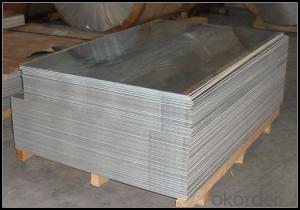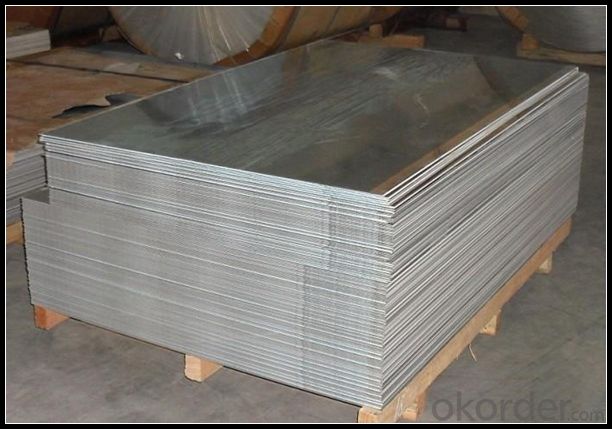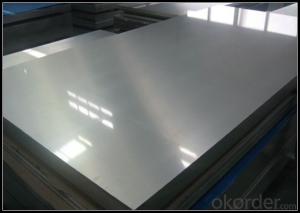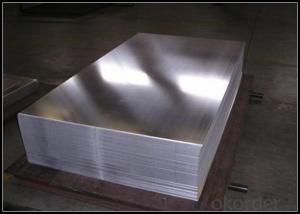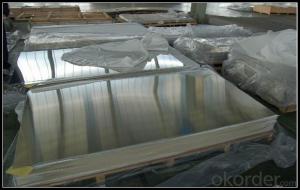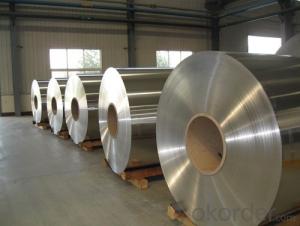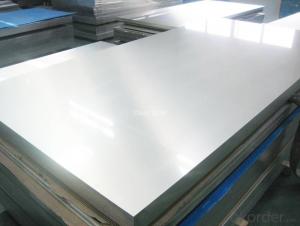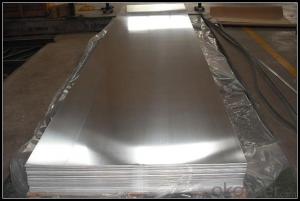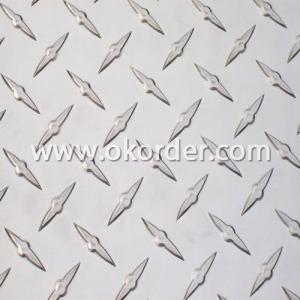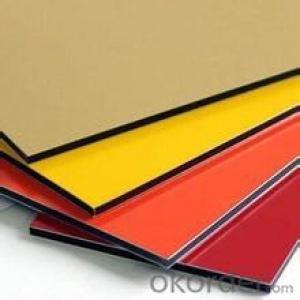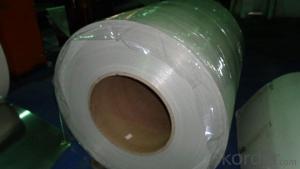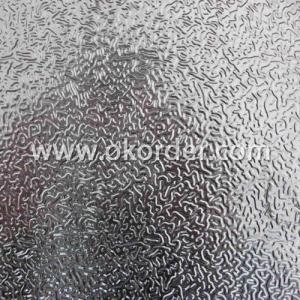5052 Mill Finish Aluminum Sheet Alloy AA1050 for Curtain Wall
- Loading Port:
- Shanghai
- Payment Terms:
- TT OR LC
- Min Order Qty:
- 5 m.t.
- Supply Capability:
- 10000 m.t./month
OKorder Service Pledge
OKorder Financial Service
You Might Also Like
Specification
1. Specification of Mill Finish Aluminium Sheet Alloy AA1050 for Curtain Wall
Alloy Number | AA1xxx 3xxx 5xxx |
Temper | H12, H14, H16, H18, H22, H24, H26, H32, HO, F |
Thickness | 0.1mm – 500mm |
Width | 10mm- 2200mm |
Standard | GB/T3880-2006, ASTM, ISO, EU standard |
2. Application of Mill Finish Aluminium Sheet Alloy AA1050 for Curtain Wall
(1).Interior: wall cladding, ceilings, bathrooms, kitchens and balconies, shutters, doors...
(2).Exterior: wall cladding, facades, roofing, canopies, tunnels,column covers , renovations...
(3).Advertisement: display platforms, signboards, fascia, shop fronts...
3. Feature of Mill Finish Aluminium Sheet Alloy AA1050 for Curtain Wall
Surfact Quality :
Be free from Oil Stain, Dent, Inclusion, Scratches, Stain, Oxide Dicoloration, Breaks, Corrosion, Roll Marks, Dirt Streaks and other defect which will interfere with use,
Mechenical Property:
Chemical Composite and Mechanical Property
4. Certificate:
SGS and ROHS(if client request, paid by client), MTC(plant provided), Certificate of Origin(FORM A, FORM E, CO), Bureau Veritas and SGS (if client request, paid by client), CIQS certificate
5. Image of Mill Finish Aluminium Sheet Alloy AA1050 for Curtain Wall
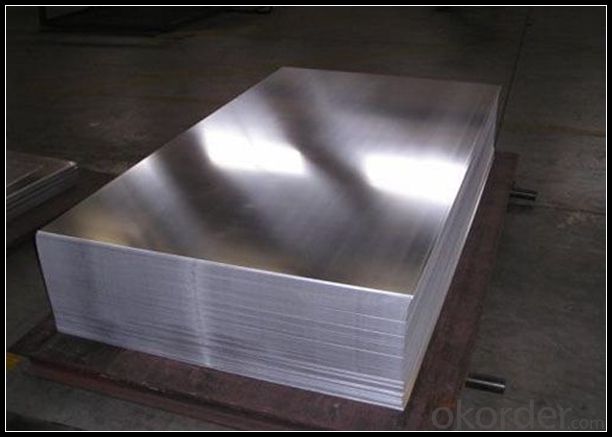
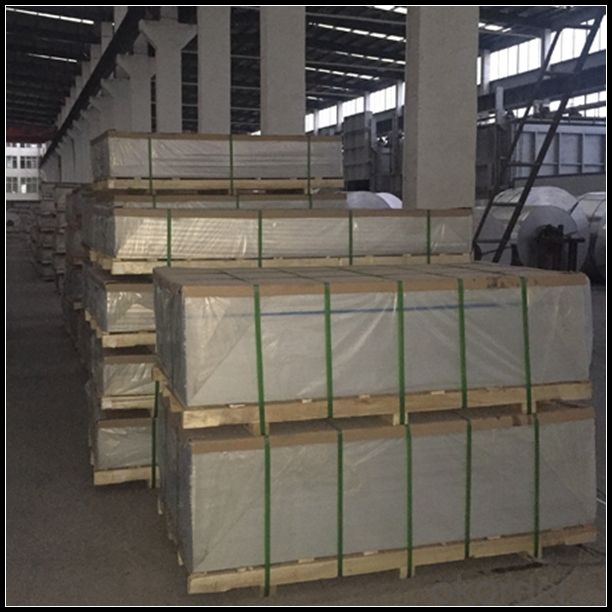
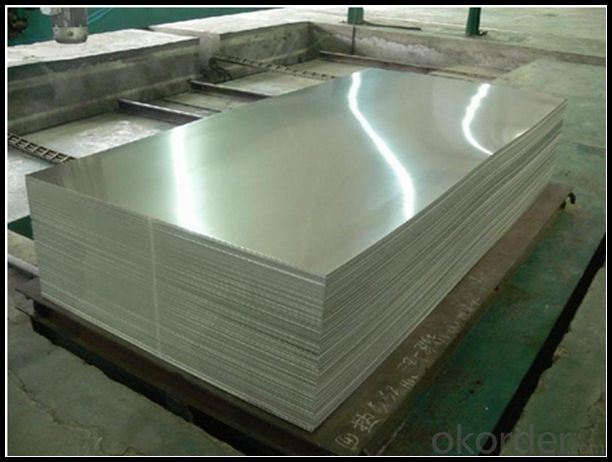
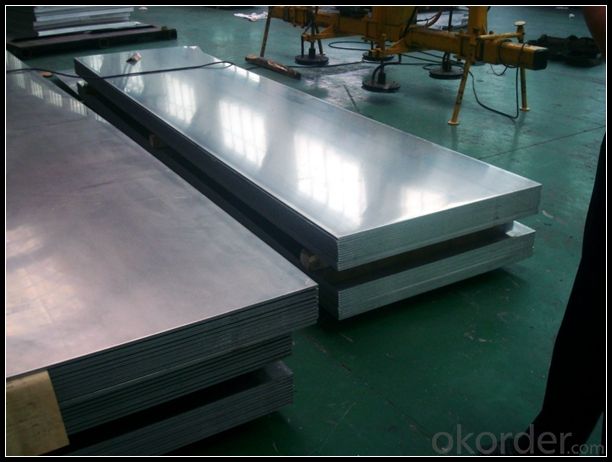
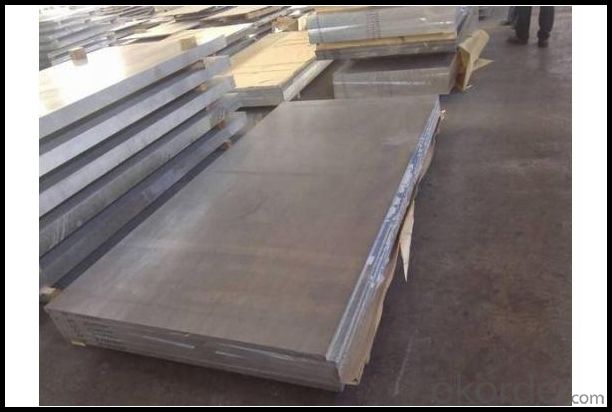
6. Package and shipping of Mill Finish Aluminium Sheet Alloy AA1050 for Curtain Wall
First, plastic cloth with drying agent inside; Second, Pearl Wool ; Third, wooden cases with dry agent , fumigation wooden pallets, aluminum surface could cover blue PVC film
7. FAQ
1) What is the delivery time?
Dpends on actual order, around 20 to 35 days
2)What is the QC system:
We have QC staff of 20 persons and advanced equipment, each production is with MTC traced from Aluminum ingot lot.
3) What market do you mainly sell to?
Australia, America, Asia, Middle East, Western Europe, Africa etc
- Q: What is the thickness of the aluminum sheets?
- The thickness of the aluminum sheets can vary depending on the specific product or application. Aluminum sheets are available in a wide range of thicknesses, typically ranging from 0.006 inches (0.15 mm) to 0.25 inches (6.35 mm) or even thicker. The appropriate thickness will depend on the specific requirements and intended use of the aluminum sheet.
- Q: What is the typical modulus of elasticity for aluminum sheets?
- The typical modulus of elasticity for aluminum sheets is around 70 GPa (gigapascals) or 10 million psi (pounds per square inch). However, it is important to note that the modulus of elasticity can vary depending on the specific alloy and temper of the aluminum sheet.
- Q: Can aluminum sheets be used for architectural facades?
- Yes, aluminum sheets can be used for architectural facades. Aluminum is a lightweight and durable material that is commonly used in construction due to its corrosion resistance and versatility. It can be easily shaped, cut, and formed into various sizes and designs, making it suitable for creating aesthetically pleasing architectural facades. Additionally, aluminum sheets offer excellent weathering properties, low maintenance requirements, and can be finished with different coatings to enhance their appearance and protection against environmental elements.
- Q: I need some aluminum sheets for an art project. I'm not sure where to find such a thing, though. I've looked at Home Depot briefly and aluminum flashing is the closest thing I've found. Flashing comes in a roll and is just a bit too thin. I need flat sheets of aluminum that are somewhat stiff, but not more than, say, 1/4 thick. Are there any stores that sell such things? A larger sheet would be fine if I could either get it cut at the store or find some way to cut it to the size I want. How do you cut aluminum, anyway? Any suggestions are greatly appreciated!
- any contractor that does heating and coolin..... or a contruction site in your area
- Q: What are aluminum sheets used for?
- Aluminum sheets are widely used for various applications such as building facades, roofing, automotive parts, aircraft components, packaging materials, electrical wiring, and heat exchangers due to their lightweight, corrosion-resistant, and malleable properties.
- Q: Can aluminum sheets be used for battery enclosures?
- Yes, aluminum sheets can be used for battery enclosures. Aluminum is commonly used in battery enclosures due to its lightweight, corrosion-resistant, and electrically conductive properties. It provides a protective casing for the battery, ensuring safety and efficient performance.
- Q: What are aluminum sheets made of?
- Aluminum sheets are typically made of pure aluminum or aluminum alloy, which is a combination of aluminum and other elements such as copper, magnesium, or zinc. The exact composition of the alloy depends on the specific application and desired properties of the sheet. Pure aluminum sheets are softer and more malleable, while alloyed aluminum sheets offer increased strength, durability, and resistance to corrosion. The sheets are produced through a process called rolling, where a large block or ingot of aluminum is passed through a series of rollers to reduce its thickness and create the desired sheet size.
- Q: Can the aluminum sheets be used for manufacturing aircraft engine components?
- Yes, aluminum sheets can be used for manufacturing aircraft engine components due to their lightweight, high strength, and good corrosion resistance properties.
- Q: The idea that you can adequately protect yourself from the Alien and government thought transmissions with a 'tin-foil / aluminum hat is just a myth. The correct and real thing to use is an aluminum construction site type of hard-hat. That is why the government and all major defense contractors wore aluminum hard-hats back in the 1950's. The plastic and fiber glass hard-hats that they use now is only because the Aliens got wise to the old aluminum hard-hat trick and outlawed them after the Aliens and their Illuminati minions took over after President Truman got out of office. Everyone knows that.So does any company anywhere in the world currently defy the Alien’s production ban on aluminum hard hats? Or is e-bay and garage sales the only source of aluminum construction site hard hats?
- No Osha did. You know those aliens in Washington DC. Snake people from outer space. Now go wait for the mother ship like a good little fella.
- Q: What industries use aluminum sheets?
- Aluminum sheets are widely used in various industries due to their numerous advantageous properties. One significant industry that utilizes aluminum sheets is the automotive industry. Aluminum is lightweight, yet strong, making it an ideal material for manufacturing car bodies and parts. It helps to reduce the overall weight of the vehicle, thus improving fuel efficiency and reducing emissions. Another industry that heavily relies on aluminum sheets is the aerospace industry. Aluminum's high strength-to-weight ratio makes it suitable for aircraft construction. It is used in the manufacturing of airplane frames, wings, and fuselages. The lightweight nature of aluminum contributes to increased fuel efficiency and allows for larger payloads. The construction industry is also a major consumer of aluminum sheets. Aluminum's corrosion resistance and durability make it an excellent choice for building materials. It is commonly used for roofing, siding, windows, doors, and structural components in both residential and commercial construction projects. In the packaging industry, aluminum sheets are extensively used for the production of beverage cans. Aluminum cans provide a lightweight and portable packaging solution, while also ensuring product freshness and protection from light and air. Furthermore, the electrical industry utilizes aluminum sheets for various applications. Aluminum's excellent conductivity makes it suitable for electrical transmission lines, cables, and wiring. It is also used in the production of heat sinks and electrical enclosures. Other industries that employ aluminum sheets include the marine industry, where it is used for boat building and ship construction due to its resistance to corrosion in saltwater environments. Additionally, aluminum sheets are used in the manufacturing of household appliances, such as refrigerators, ovens, and washing machines, due to their durability, lightweight, and heat conductivity properties. Overall, the versatility, strength, lightweight nature, and corrosion resistance of aluminum sheets make them indispensable in a wide range of industries, including automotive, aerospace, construction, packaging, electrical, marine, and household appliances.
Send your message to us
5052 Mill Finish Aluminum Sheet Alloy AA1050 for Curtain Wall
- Loading Port:
- Shanghai
- Payment Terms:
- TT OR LC
- Min Order Qty:
- 5 m.t.
- Supply Capability:
- 10000 m.t./month
OKorder Service Pledge
OKorder Financial Service
Similar products
Hot products
Hot Searches
Related keywords
